1. TRIM STEAKS
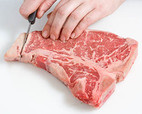
To keep flare-ups to a minimum, use a sharp knife to trim any hard, white fat from the perimeter of the steaks. Leave no more than 1/8 inch of fat.
2. PAT DRY
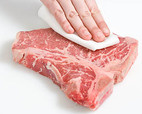
Pat both sides of the steaks dry with paper towels—the first step to a beautiful crust, which is the hallmark of a perfect grilled steak.
3. SALT AND RUB
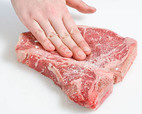
Next, rub the steaks on both sides with a mixture of equal parts salt and moisture-absorbing cornstarch. The salt both seasons the steak and draws moisture to the surface.
4. STASH IN FREEZER
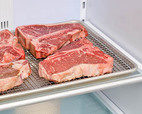
Freeze the steaks, uncovered, for 30 minutes. The moisture drawn out by the salt evaporates in the dry environment of the freezer. Drier surface = better crust = better steak.
5. HEAT GRILL GRATE

Preheat the grill to keep the steaks from sticking. For gas, turn all the burners to high, then cover. For charcoal, place the grate over the hot coals and heat, cover, for five minutes.
6. CLEAN GRILL GRATE
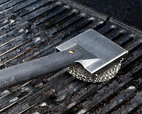
Before you start cooking, use a grill brush to scrape off any stuck-on food from the grill. Grilling on a grate encrusted with the remnants of last night's dinner is like cooking in a dirty pan.
7. OIL GRILL GRATE
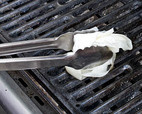
Oiling the grill grate also prevents the steaks from sticking. Dip a wad of paper towels in vegetable oil, grab the wad with grill tongs, and then brush the grate.
8. START ON HOT SIDE

Sear the steaks on the hot side of the grill, undisturbed, for two to three minutes. If you're grilling a porterhouse or T-bone, place the tenderloin side nearer the cool side of the grill.
9. FLIP AFTER BROWNING

Don't move the steaks before the crust has formed. Give the steaks a wiggle: If they don't release easily, leave them alone until the do. Brown the second side for another two or three minutes.
10. MOVE TO COOL SIDE
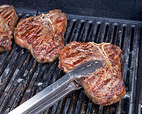
Once the steaks are well browned on both sides, slide them to the cool side of the grill and continue cooking until they reach your preferred degree of doneness.
11. CHECK DONENESS

Insert an instant-read-thermometer into the side of the steaks. Take them off the grill at 120 degrees for rare, 125 for medium-rare, and 135 for medium.
12. GIVE IT A REST
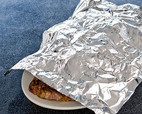
Put the steaks on a plate, cover loosely with foil, and let them rest for five minutes to let the flavorful juices redistribute; if you slice the steaks right away, some juices will run out.
MAKING A PERFECT PAN-SEARED STEAK
This simple pan-searing technique produces perfect steaks—everytime.
PAT DRY

Browning steaks develops flavor and is a crucial step, and dry steaks brown better than wet steaks. Blot the steak dry with paper towels just before putting it on the skillet. And season the steak right before cooking. That way the salt can flavor the food without drawing out moisture, which would inhibit browning.
HEAT OIL & BROWN STEAKS

Pour a tablespoon of vegetable oil into your skillet and heat the pan over medium high heat until you see wisps of smoke. Don’t use olive oil, as it has a lower smoke point and will start to burn before your pan is hot enough to cook your steaks.
Brown the steaks on the first side for about four minutes or so. Don’t move the steaks until they have chance for the crust to form. You’ll know a crust has formed because the steak will lift off the pan with little to no resistance. Flip the steaks over and continue to cook to desired doneness, 4 to 6 minutes longer.
TRANSFER TO PLATE

Transfer the steaks to a clean plate, tent loosely with foil, and let rest for 5 minutes. While the steaks rest, the proteins within it will relax and do a better job of holding onto the steak’s precious juices.
COMMON STEAK PITFALLS
Few things are more frustrating than anticipating a nicely browned, juicy steak only to find yourself gnawing at a dried-out, pale, or flavorless one.
WET AND PALE
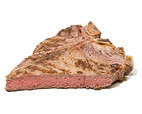
Dry it! Steak that is put on the grill when its exterior is wet never will develop color.
CRUSTY BUT RAW

Steaks need to finish over gentle heat to cook through properly. Cooked over high heat from start to finish, the steak will burn on the outside before the inside is cooked.
BURNT AND DRY

To take the adventure out of grilling, use an instant-read thermometer to check the steak's temperature. Or else you might end up with steak like this.
Không có nhận xét nào:
Đăng nhận xét